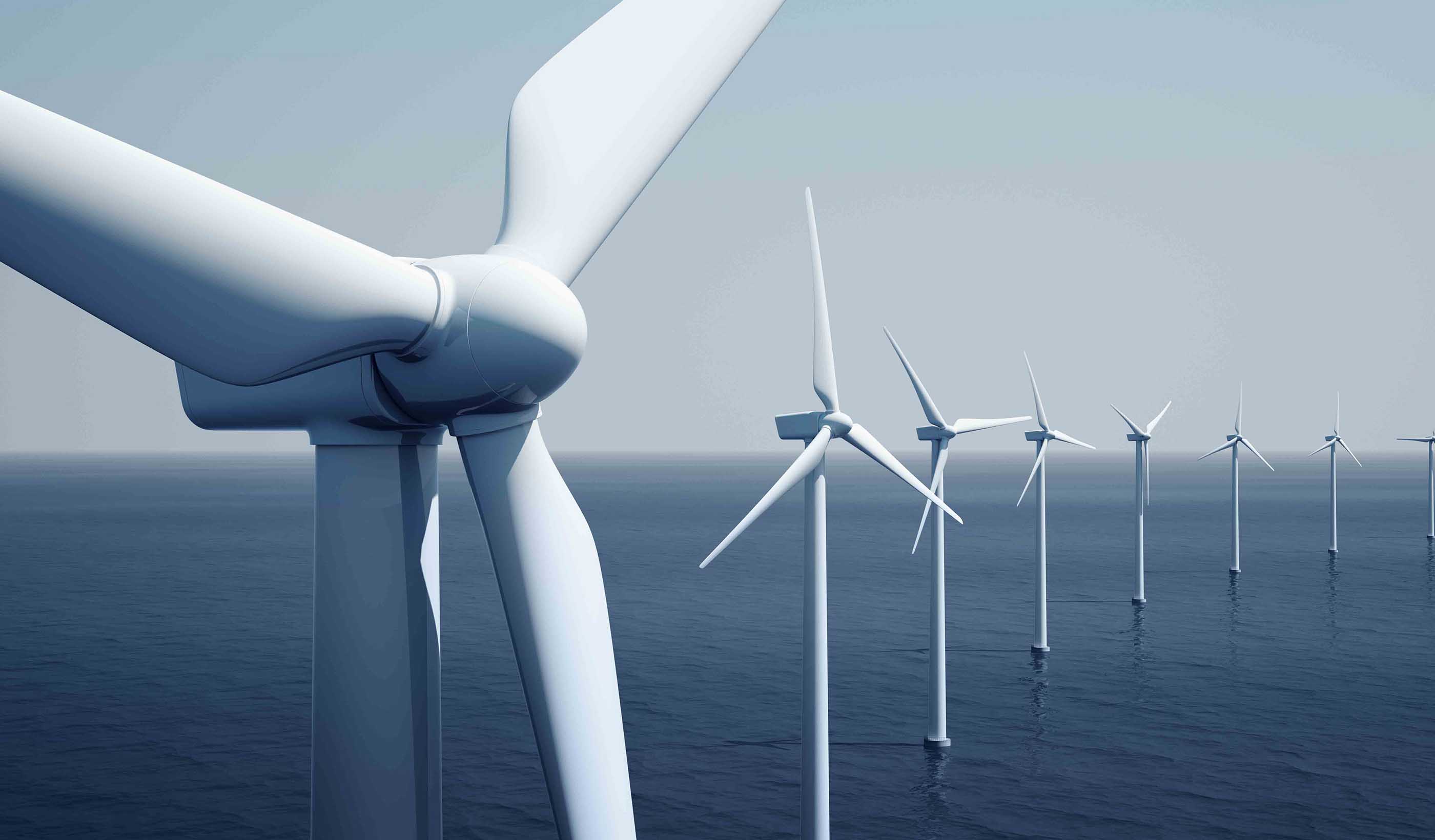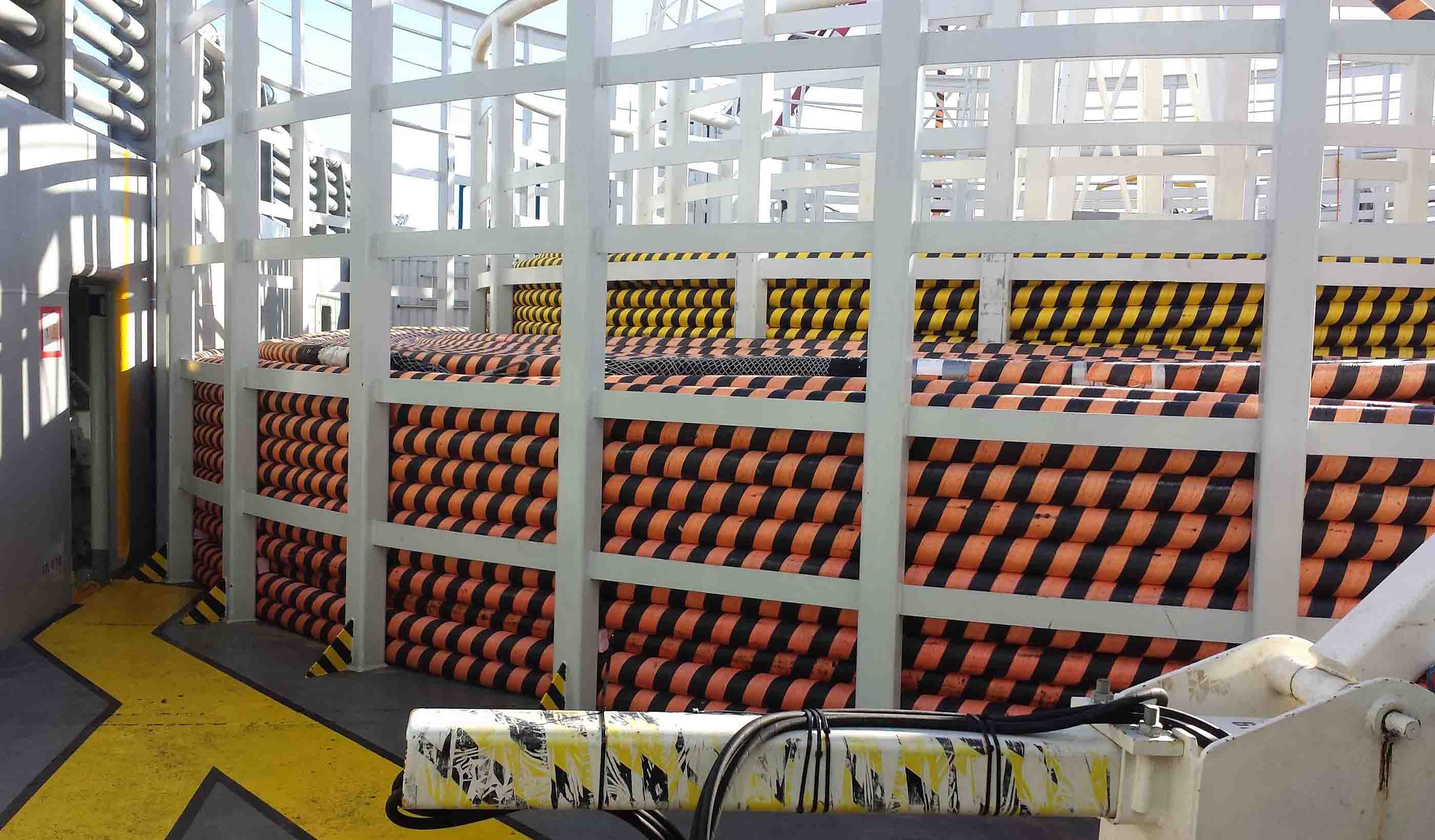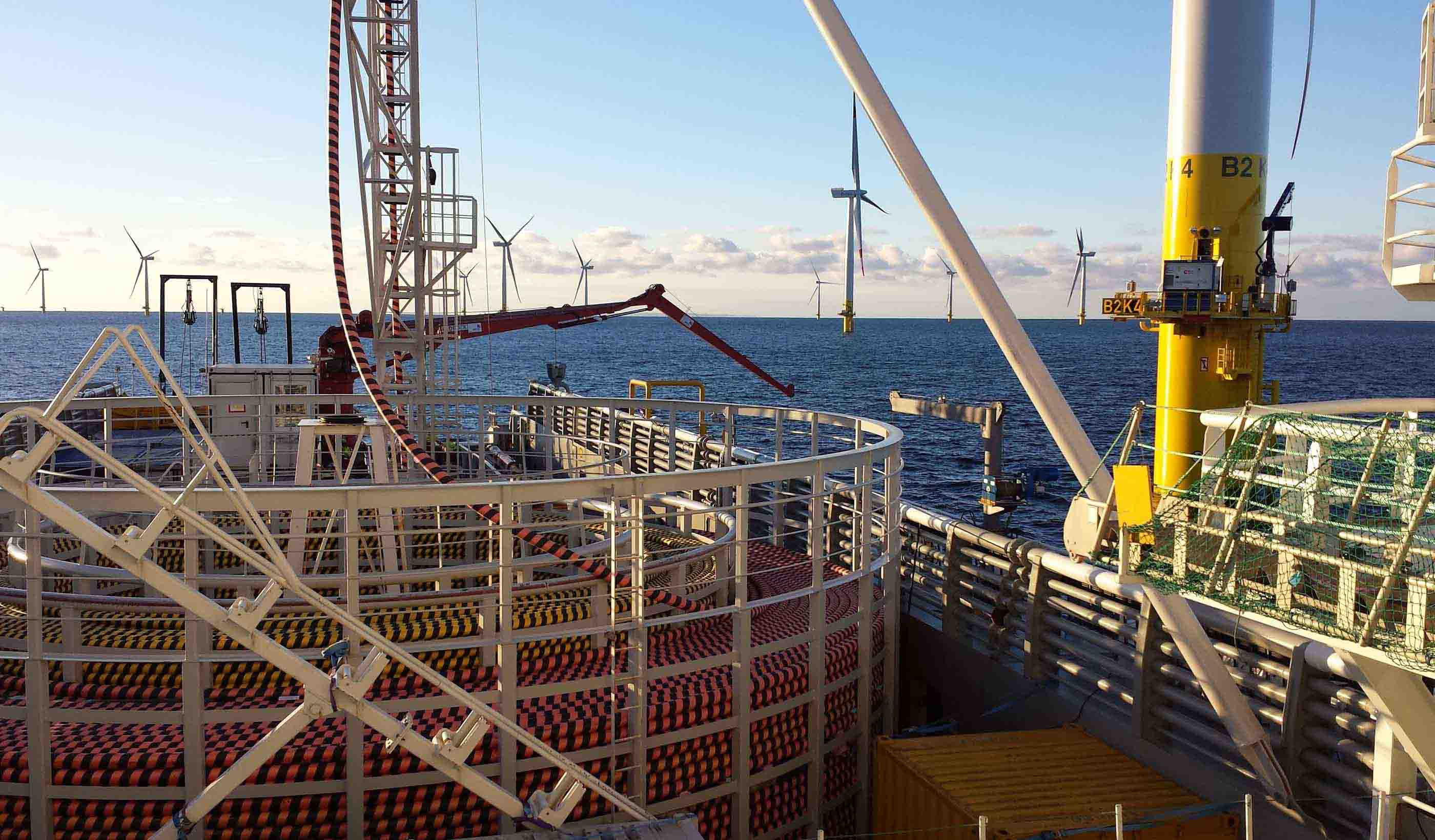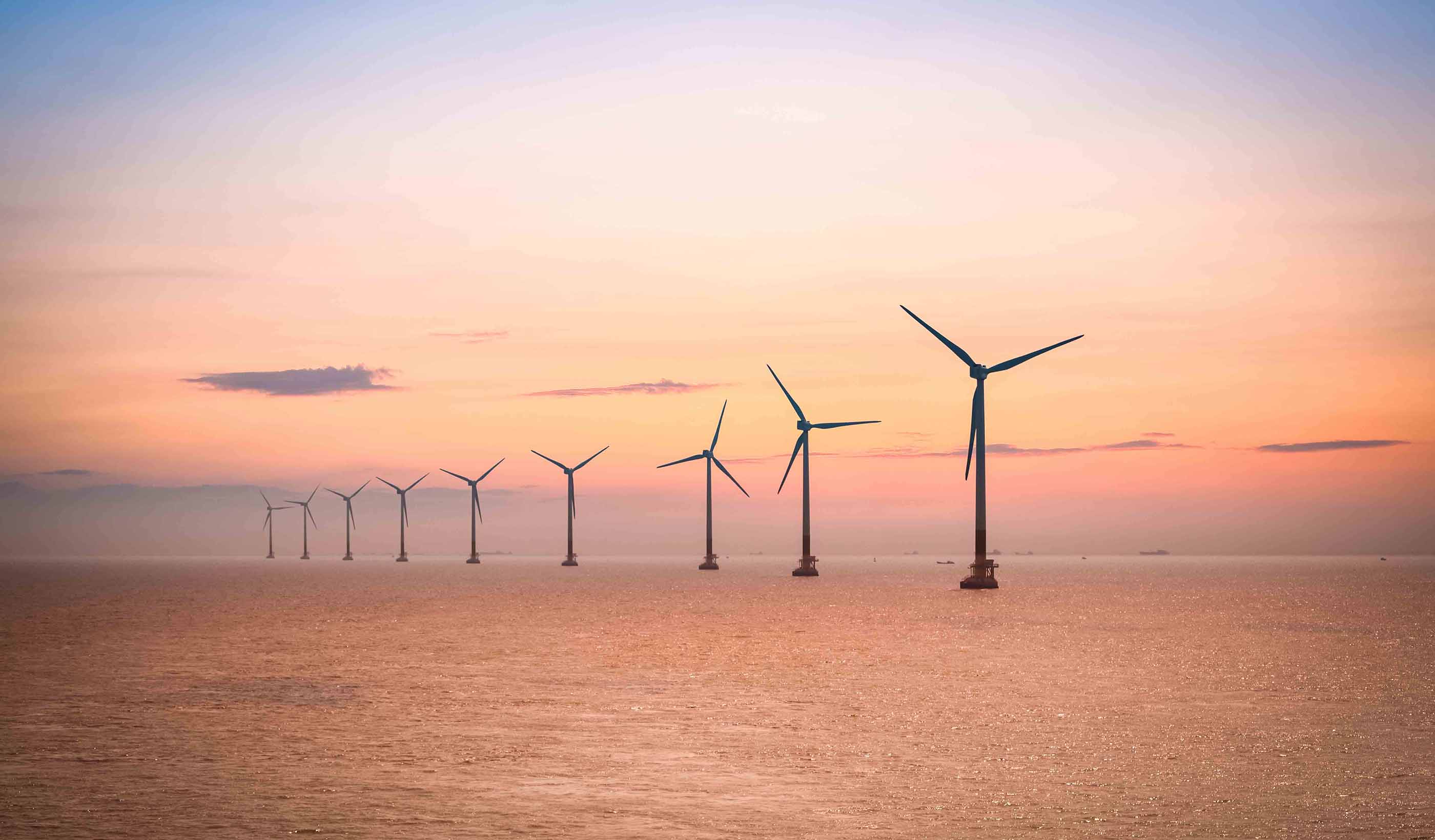4 challenges to overcome when transmitting offshore wind power
June 07, 2022
June 07, 2022
Procuring, routing, and protecting offshore wind cables is essential to getting the power to the grid. So is environmental stewardship.
The global energy transition is reshaping the world’s power systems and impacting how we generate and deliver electricity. The development of offshore wind power is part of this transition, and it has resulted in an explosion of offshore wind projects in the United States, Europe, and elsewhere.
Offshore wind projects are complex to say the least. They involve advanced technologies and specialized logistics for marine environments. They also require considerable engineering and environmental expertise. One of the more prevailing issues associated with offshore wind projects is how to best transmit the ever-increasing amount of offshore wind energy into the grid. To accomplish this, submarine export cables deliver the power to shore so it can be distributed to end users.

As the number—and size—of wind farms increases and their distance from the shore grows, so too do the challenges associated with connecting wind farms to the grid.
As the number—and size—of wind farms increases and their distance from the shore grows, so too do the challenges associated with connecting wind farms to the grid. Some of the main challenges that are facing the industry related to offshore wind farm export cables are:
Our teams have dealt with these challenges. Below, we’ll explore some of our insights into these issues.
One of the first challenges offshore wind projects face is procuring the cables. Due to the significant increase in global demand for submarine cables, most of the world’s cable manufacturers are currently operating at full capacity. This means that procuring and installing offshore submarine cable systems takes longer than it used to. The increase in demand may also lead to cable manufacturers being more selective of the projects they bid on. This can result in fewer competitive bids and higher associated costs.
So, it’s important to engage with cable suppliers earlier in the project’s life cycle than before. Doing this will alert suppliers to your specific project and open an important flow of information, benefiting both the cable suppliers and the project owner. It allows for communication of project timelines and manufacturing constraints, allowing both parties to work together and bring the project to fruition.
There are two types of basic technology for offshore wind transmission: high voltage alternating current (HVAC) and high voltage direct current (HVDC). HVDC is the preferred option for larger offshore wind projects, especially as they move farther away from the shore. Why? Because HVDC cables are capable of longer transmission distances with lower losses compared to HVAC cables. Through the careful use of reactive compensation, it is also possible to increase the transmission capacity of an HVAC cable system. And our teams are experienced in determining the optimal cable system for unique project requirements.
To help make the procuring process easier, it is important to provide a well-written tender package and have client representation throughout the cable manufacturing process. This is vital to ensure that the cable system meets the technical requirements of the project.

There are two types of basic technology for offshore wind transmission: high voltage alternating current and high voltage direct current.
It’s essential to find the right route for transmission cables. It would be optimal to route the cables from the offshore wind farms directly to the shoreline and immediately connect into the electrical grid. But this is not always possible due to constraints in the ocean, such as marine-protected areas, underwater canyons, and high shipping traffic areas. We also must consider the design of the onshore electrical transmission system. It may not be ready to accept offshore wind power at shore locations that are already congested.
The points of interconnection in the electrical system need to be determined by conducting power system studies. Having knowledge of the electrical system is important, as transmission capacity may be available in the future where there are non-renewable generating plants planned for retirement. In many areas, the electrical system close to the coastline is not sufficient to carry large amounts of power from the offshore wind farms further into the grid. These instances require additional onshore transmission upgrades. This calls for coordination with the local planning authority and the utility who owns the substation.
Landfall locations for the cables need to be selected carefully. It’s important to consider environmental constraints, coastal protection requirements, and construction requirements. Generally, we use horizontal directional drilling to install the cable from a location a few hundred meters off the coast. This allows us to bypass—and not disturb—the shoreline.
Once the cables reach shore there is a need for more infrastructure and more cables to transmit the power, either underground or overhead, to the designated substation. Both transmission-cable options impact on the environment and must be addressed. Public outreach is important.
The electrical substations and equipment needed to tie into the points of interconnection will require more land. Ideally, the point of interconnection is as close as possible to the submarine cable landing point.
Many governments are planning significant growth of renewables to reduce the effects of climate change. So, consider a regional approach when integrating renewables into the existing electrical system to optimize the future transmission system. A project-by-project approach for interconnecting offshore wind into the grid is not ideal.

Cable failures are very costly to repair. It is not only the cost of the cables but also the lost revenue of not transmitting power during the outage.
Next up is finding an effective way to protect the cables. According to reports from insurers, approximately three-quarters of all offshore wind insurance claims are related to cables. And 88% of those cable-insurance claims are related to the export cables, which transport the power to shore.
Cable failures are costly to repair. It is not only the cost of the cables but also the lost revenue from the outage. According CIGRE Technical Brochure 815, it takes more than three months to get a system back online after a cable failure. This shows how critical it is to not only properly protect the cables but also to monitor the cable system.
Mechanically protecting submarine cables can assist with reducing damage from anchors, fishing gear, dredging, and more. This requires a detailed geophysical and geotechnical surveying of the cable route, along with a cable burial risk analysis. If cable burial is not possible, then other means such as articulated concrete mattresses or rock dumping are employed. The submarine cable route may also need to cross over other linear infrastructure assets such as communications cables, other power cables, or pipelines. In these instances, it is important to engage with the asset owners as early as possible to develop cable crossing requirements and agreements.
Submarine cable-monitoring systems can identify preventative maintenance requirements or serve as an early warning to potential cable damage. There are several monitoring systems and teams can also use a remotely operated vehicle (ROV) to inspect the cables.
A lot of work goes into protecting transmission cables. Having a repair preparedness strategy in place can help to minimize the outage time if damage occurs. Those strategies ensure that all documentation, permits, and framework contracts are in place for all aspects associated with cable system repair.
There are some new and exciting developments in the industry that will facilitate the future growth of offshore wind.
The primary environmental concerns with offshore wind transmission are the impact to the seafloor, sensitive coastal environments, and other marine life. There is also concern with potential conflict with other ocean uses.
Installing electric transmission cables typically involves cable burial or cable protection methods. When burying cables in soft sediments, teams often employ water jetting methods to lay and bury cables approximately two meters deep. This creates temporary disturbance of the seabed and may transverse through sensitive environments. We must document benthic resources, and the impacts must be minimized through the permitting process for construction. The same is true for other methods such as dredging in high relief areas or protecting surface laid cables.
Offshore wind projects also must consider avoiding sensitive habitats wherever possible. A good example of this is the use of horizontal directional drilling at the ocean/land interface. This helps avoid sensitive shoreline resources and habitats by drilling at depth below these resources.
Cable installation must also account for other ocean uses such a fishing interests, sand borrow areas, artificial reefs, and navigation channels. Burial must be at sufficient depth in or around these areas to avoid direct contact and potential impacts.
Another strategy that could help minimize environmental impacts is the use of shared transmission systems for multiple offshore wind farm projects. This approach reduces the number of transmission cables required offshore, the number of beach landings, and other inland impacts. The use of HVDC cable systems also reduces the number of cables as compared to HVAC systems required for a given amount of capacity. This helps to reduce the overall impact to the environment.
Providing comprehensive routing and siting for all components of an electrical transmission system helps to minimize the environmental impacts from all wind power projects.

There are some new and exciting developments in the industry that will facilitate the future growth of offshore wind.
Offshore wind development continues to grow rapidly. And export cables are a key element of those projects. Limited supply chain capacity to meet global demand, the routing and protection of cables, and minimizing environmental impacts are all challenges faced by the industry today. And they all require careful attention to successfully deliver these types of projects.
There are some new and exciting developments in the industry that will facilitate the future growth of offshore wind. They include:
Offshore wind has come a long way since the Vindeby Offshore Wind Farm, the first offshore wind project constructed in Denmark in 1991. Today, the industry is growing around the world at an incredible pace. And we are excited to see these developments fuel the future growth of the industry.